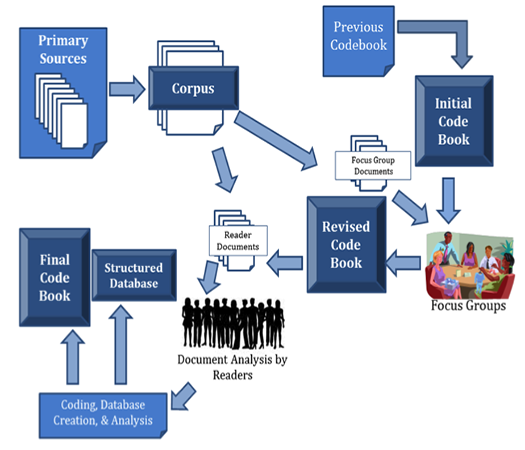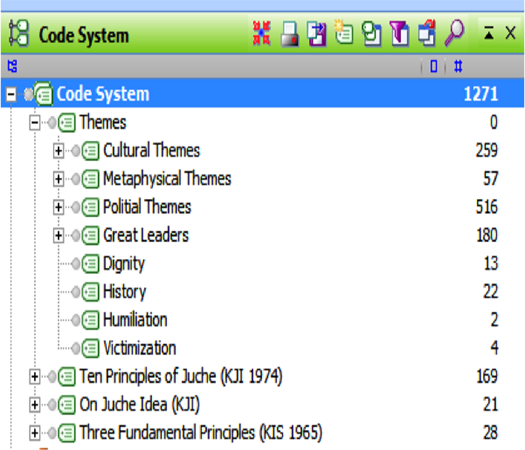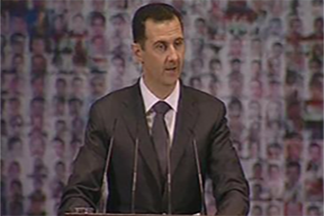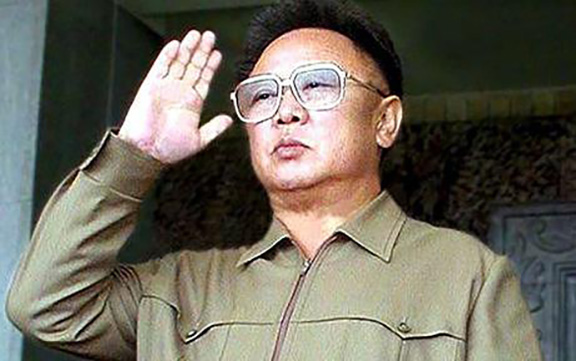DISCOURSE ANALYSIS OF LEADER SPEECHES AND SOCIAL COMMENTARY
NSI has applied its discourse analysis to numerous efforts ranging from detecting cognitive complexity that precede armed conflict in India-Pakistan, complexity variations and rhetoric of nuclear and missile testing and peace negotiations, behavioral intentions of leadership including Kim Jong Il and Bashar al-Assad, in- and out-group distinctions in Arabic media, trust and worldview themes and rhetoric amongst various groups in Farsi, competing views and corresponding political actions from competing leaders, and insurgent discourse in Pashto during Taliban and Soviet eras.

Discourse Analysis Background and Motivation
NSI uses a broad definition and utilizes several approaches in analyzing discourse, including a “linguistic” approach which focuses on rules, grammar, and structure and a “language in use” approach that focuses on patterns of discourse for certain purposes in particular contexts. We augment our primary approach with advanced concepts from thematic analysis and mixed-method techniques. For example, integrative cognitive complexity and thematic analysis is used to gain insight into the intentions of leadership during a crisis as well as measure rhetoric and cultural themes in speeches delivered by the leadership. Integrative cognitive complexity acknowledges other perspectives, sees causal connections between them, and reconciles differences between perspectives. It does not refer to an individual’s general cognitive ability or to other ways that thinking can be complex; it is limited to an individual’s recognition of different perspectives and causal connections between them and has largely been applied to the analysis of political rhetoric and rhetoric pertaining to leaders’ lives. Its a well-established methodology in political psychology, and a wide body of literature demonstrates that the integrative cognitive complexity of key leaders decreases prior to engaging in conflict and rises as their states pursue more cooperative or peaceful policies. Thematic analysis captures, reports, and analyzes patterns in conceptual themes expressed in discourse, and is commonly used in anthropology, linguistics, and many applied fields. Thematic analysis assumes that people’s language reveals underlying attitudes, biases, and cultural assumptions about the world.

Discourse Analysis Methodology
Our discourse methodology consists of the following basic steps:
- collect mission-relevant corpus;
- use established codebooks to begin search for relevant themes;
- use focus groups and larger samples of native/insider speakers to identify culturally-relevant themes;
- use NSI researchers to code feedback, creating a taxonomy of themes;
- use the taxonomy to create a structured database of coded themes and language examples;
- add in mission-relevant variables to the database (e.g., time, speaker, group affiliation, political events, conflict events); and
- analyze the database for predictive patterns in language use.
Discourse Analysis Applications
NSI has applied discourse analysis to numerous problems, including: detecting in- and out-group distinctions in Arabic media; assessing the expression of trust and worldview in Farsi (Iranian Persian) and the association of Iranian/Persian worldview themes to rhetoric concerning the Iranian nuclear program; evaluating the potential of the North Korean Leadership’s ability to reconcile competing views, and of its behavioral intentions, through an analysis of nine of Kim Jong Il’s speeches over the past year; capturing discourse of Palestinian and Israeli representatives for major groups including Israeli government and military, Israeli community leaders, Hamas, and Fatah; distinguishing in- and out-groups in the rhetoric of Afghan insurgents (Soviet era and Taliban); and anticipating political actions (conflict, nuclear testing, peace negotiations) from the complexity variations and rhetoric of Indian and Pakistani leaders.

Discourse Analysis of Bashar al-Assad Speeches
NSI conducted discourse analysis of Bashar al-Assad speeches to evaluate his actions and intentions in the ongoing Syrian civil war. Our analysis identified potential types of actions and messages most likely to influence and deter Bashar al-Assad from using force in the ongoing Syrian civil war. Our approach was based on multidisciplinary analyses of Bashar al-Assad’s speeches, and how he reacts to real events and verbal messages from external sources. The speeches used in our analysis were delivered by al-Assad from Jan 2000 to Sept 2013; the past six years was sampled most densely. Additional Twitter feeds were analyzed to gauge his influence in the region. We utilized five separate analytical methods to analyze his speeches: (i) automated text analytics that profile al-Assad’s decision-making style and ability to appreciate alternative viewpoints; (ii) integrative cognitive complexity analysis that reveals al-Assad’s ability to appreciate others’ viewpoints and integrate them into a larger framework; (iii) thematic analysis of the cultural and political themes al-Assad expresses before taking action or in reaction to events; (iv) qualitative interpretations of major themes in al-Assad’s rhetoric; and (v) analysis of the spread of Twitter feeds.
We highlight our major findings that reinforce each other as particularly robust for policy: al-Assad is capable of recognizing other viewpoints and evaluates them in a nuanced and context-dependent manner; al-Assad values logical argumentation and empirical evidence; al-Assad’s integrative cognitive complexity is relatively high, but might be lower before he takes decisive action or when under intense threat; al-Assad’s reasoning is consistent with his Arab nationalist Ba’athist political ideology, and with a consistent opposition to Israel and Western domination; and al-Assad sees Arab resistance and his leadership, or at least that of the Ba’ath party, as essential. Our primary recommendations were: avoid direct threats to the Syrian Ba’athist regime’s hold on power; appeal to al-Assad’s relatively high baseline level of integrative cognitive complexity (ability to see different sides to an issue, flexible decision-making, openness to information), pragmatism, and respect for Arab nationalism to broker a negotiated settlement; and identify and exploit al-Assad’s dynamic levels of integrative cognitive complexity to assess his relative susceptibility, develop arguments and recommended psychological actions and/or refine assessment criteria at a specific point in time.

Discourse Analysis of Kim Jong Un’s Speeches
North Korea’s relations with its neighbors were arguably at their lowest levels since the armistice of 1953. On February 12, 2013, North Korea conducted a nuclear test and moved at least one missile to the coast, threatening to launch. NSI conducted a rapid assessment of nine key speeches delivered by Kim Jong Un between 2012-2013 in an effort to gauge his intentions by examining his rhetoric. We utilized two well-vetted discourse analysis methodologies for understanding cognitive complexity and culturally relevant themes. These methods have been successful in gauging the behavioral intentions of political leaderships. The analytical focus was not on his overt messages (these are usually obvious enough), but the more subtle cultural references and linguistic markers of which leadership is often not explicitly aware and that can provide clues to the leadership’s intentions and state of mind.
Our analysis produced two key findings. First, Kim Jong Un’s integrative cognitive complexity in this past year was uniformly extremely low and, therefore, cannot indicate any shift in perspective or behavior. Integrative cognitive complexity has largely been applied to the analysis of political rhetoric and is used to assess an individual’s ability to recognize multiple perspectives and to see and understand the relationships and causal connections between them. A wide body of literature demonstrates that the integrative cognitive complexity of key leaders decreases prior to engaging in conflict and rises as their states pursue more cooperative or peaceful policies. Our analysis used a well-vetted methodology that produced an ordinal 7-scale measure to explore patterns in the integrative cognitive complexity represented in the public speeches of Kim Jung Un and the degree to which these might indicate an intention to pursue conflict. Second, key findings of thematic analysis indicate increased likelihood of conflict, although some contra- indicators exist. Thematic analysis captures, reports, and analyzes patterns in conceptual themes expressed in discourse and is commonly used in anthropology, linguistics, discourse analysis, and many applied fields. Our previous research demonstrated that subtle cultural themes, rhetorical devices, and linguistic structures were largely independent of speech topic, reinforcing the fact that speakers betray their sentiments and motives through their language. Many of the themes identified in the corpus were not necessarily culturally relevant in general Korean culture, but were more focused on the political concerns of the North Korean leadership. Political themes included communism, economic development, nuclear capability, war, military, patriotism, sovereignty, and reunification, among others. The cultural themes that we identified included concepts that were likely to be salient in Korean society, such as pride, heroism, kinship, strength, prosperity, and others. These themes resonate in a broad array of Asian societies, and were found to be salient in studies of south Asian societies. And lastly, the metaphysical themes dealt with religious and quasi-religious matters such as Juche philosophy and notions of the eternal, immortal, etc. While North Korean society is explicitly communist, Juche philosophy has many elements of Eastern philosophy and religion, including Confucian elements.